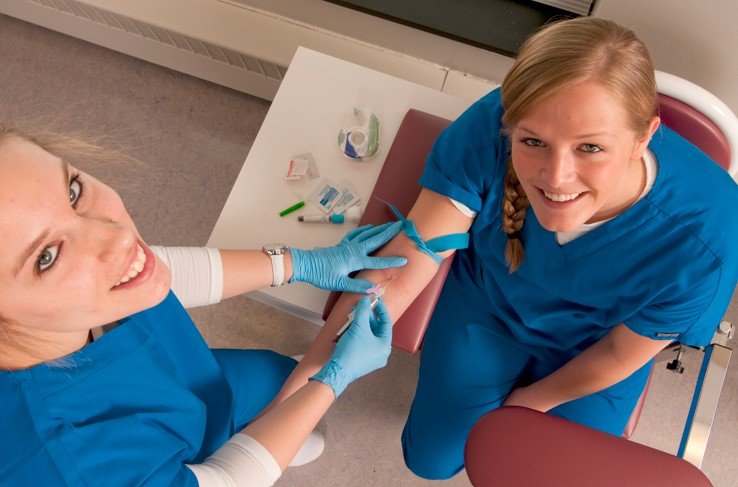Ensuring Compliance with Regulations for Phlebotomy Equipment and Supplies
Summary
- Hospitals must stay informed of and comply with updated Regulations regarding Phlebotomy Equipment and supplies to ensure patient safety and regulatory compliance.
- Implementing regular training sessions and Quality Control measures can help hospitals maintain compliance with Regulations surrounding Phlebotomy Equipment and supplies.
- Utilizing technology and automation can streamline inventory management processes and assist hospitals in tracking and maintaining compliance with Regulations related to Phlebotomy Equipment and supplies.
Introduction
Hospitals in the United States must adhere to a myriad of Regulations and guidelines to ensure the safety of patients and staff. One critical aspect of hospital operations that requires strict compliance is the management of Phlebotomy Equipment and supplies. From ensuring the proper storage and handling of supplies to maintaining accurate inventory records, hospitals must stay up-to-date with Regulations related to Phlebotomy Equipment to guarantee optimal patient care.
Regulatory Landscape
Regulations surrounding Phlebotomy Equipment and supplies are set forth by various regulatory bodies, including the Food and Drug Administration (FDA), the Centers for Disease Control and Prevention (CDC), and the Occupational Safety and Health Administration (OSHA). These Regulations aim to safeguard patient and staff health by establishing guidelines for the proper use, storage, and disposal of phlebotomy supplies.
Key Regulations
Some of the key Regulations hospitals must comply with in regards to Phlebotomy Equipment and supplies include:
- Proper labeling and packaging of supplies to prevent Cross-Contamination.
- Regular maintenance and calibration of Phlebotomy Equipment to ensure accuracy.
- Training staff on proper phlebotomy techniques and safety protocols.
- Compliance with OSHA's Bloodborne Pathogens Standard to protect healthcare workers from exposure to bloodborne pathogens.
Ensuring Compliance
Given the complexity of Regulations surrounding Phlebotomy Equipment and supplies, hospitals must implement robust systems and processes to ensure compliance. Here are some strategies hospitals can employ to stay compliant:
Regular Training Sessions
One of the most effective ways hospitals can ensure compliance with Regulations is by conducting regular training sessions for staff members involved in phlebotomy procedures. These training sessions should cover topics such as proper handling of supplies, infection control protocols, and safety precautions. By ensuring that staff are well-informed and up-to-date on best practices, hospitals can mitigate the risk of non-compliance.
Quality Control Measures
Implementing Quality Control measures, such as regular audits and inspections of Phlebotomy Equipment and supplies, can help hospitals identify potential compliance issues before they escalate. By conducting routine checks on inventory levels, expiration dates, and storage conditions, hospitals can proactively address any deviations from regulatory standards.
Utilize Technology and Automation
Technology can be a powerful ally in helping hospitals maintain compliance with Regulations related to Phlebotomy Equipment and supplies. Utilizing inventory management software can streamline the tracking and monitoring of supplies, reducing the risk of stockouts or expired products. Automated alerts can notify staff when supplies need to be replenished or when equipment requires maintenance, ensuring that hospitals remain in compliance with regulatory requirements.
Conclusion
In conclusion, hospitals must prioritize compliance with Regulations surrounding Phlebotomy Equipment and supplies to ensure the safety of patients and staff. By staying informed of updated Regulations, implementing regular training sessions, and leveraging technology for inventory management, hospitals can maintain compliance and uphold the highest standards of patient care.

Disclaimer: The content provided on this blog is for informational purposes only, reflecting the personal opinions and insights of the author(s) on the topics. The information provided should not be used for diagnosing or treating a health problem or disease, and those seeking personal medical advice should consult with a licensed physician. Always seek the advice of your doctor or other qualified health provider regarding a medical condition. Never disregard professional medical advice or delay in seeking it because of something you have read on this website. If you think you may have a medical emergency, call 911 or go to the nearest emergency room immediately. No physician-patient relationship is created by this web site or its use. No contributors to this web site make any representations, express or implied, with respect to the information provided herein or to its use. While we strive to share accurate and up-to-date information, we cannot guarantee the completeness, reliability, or accuracy of the content. The blog may also include links to external websites and resources for the convenience of our readers. Please note that linking to other sites does not imply endorsement of their content, practices, or services by us. Readers should use their discretion and judgment while exploring any external links and resources mentioned on this blog.
